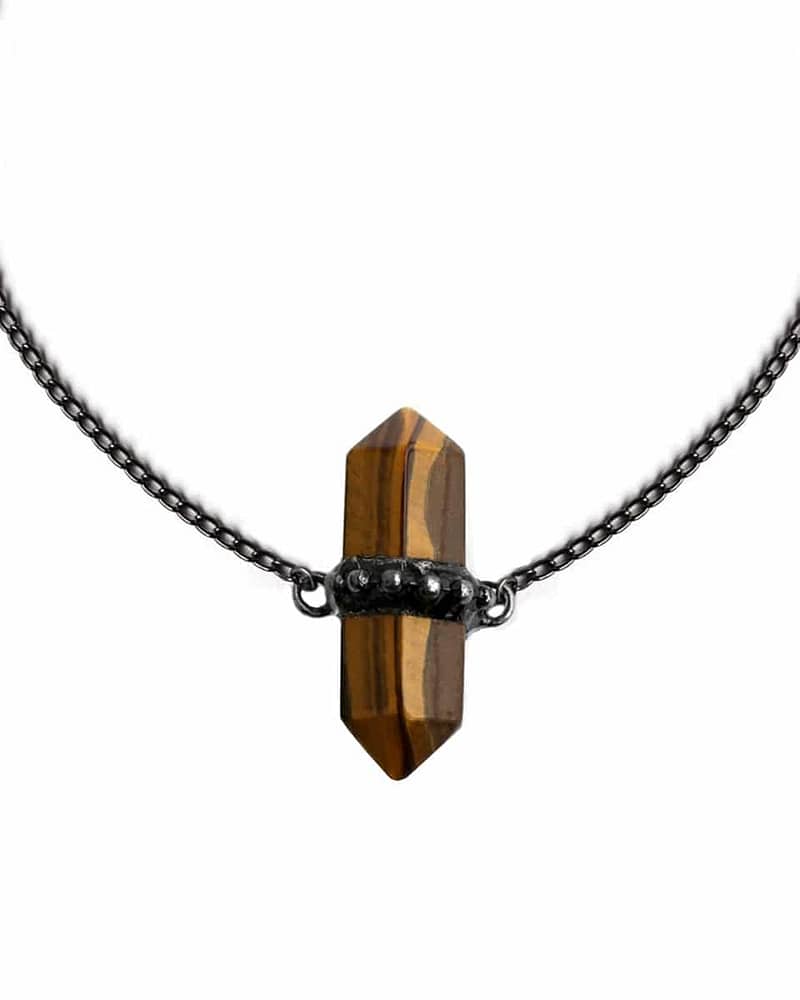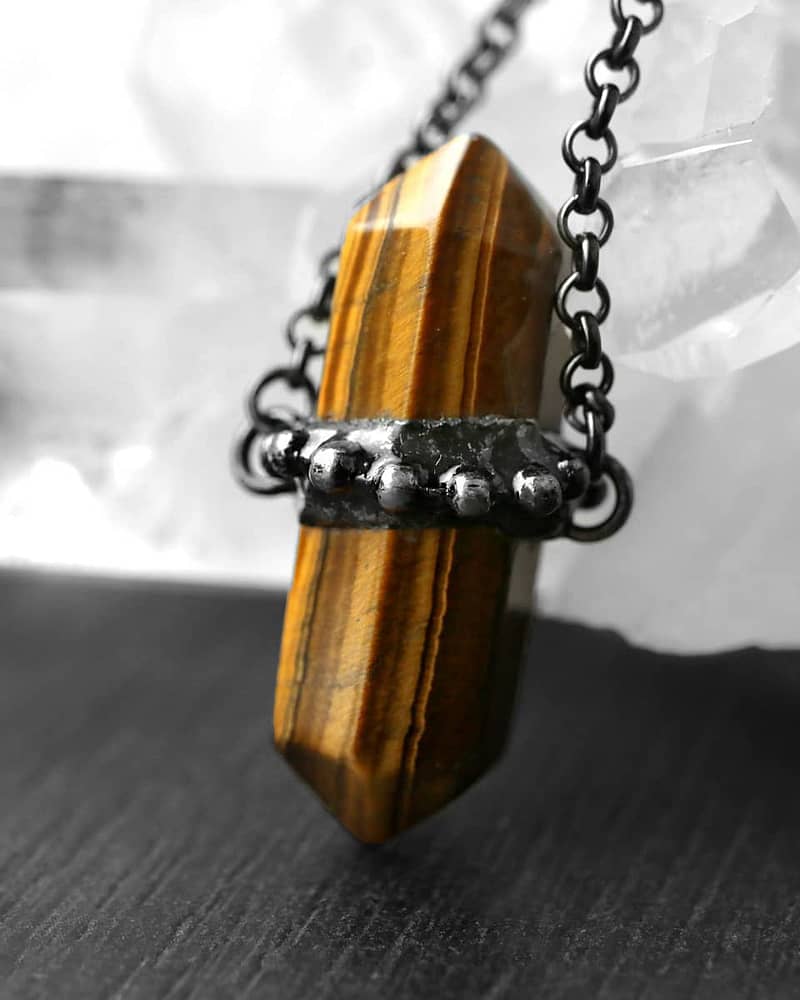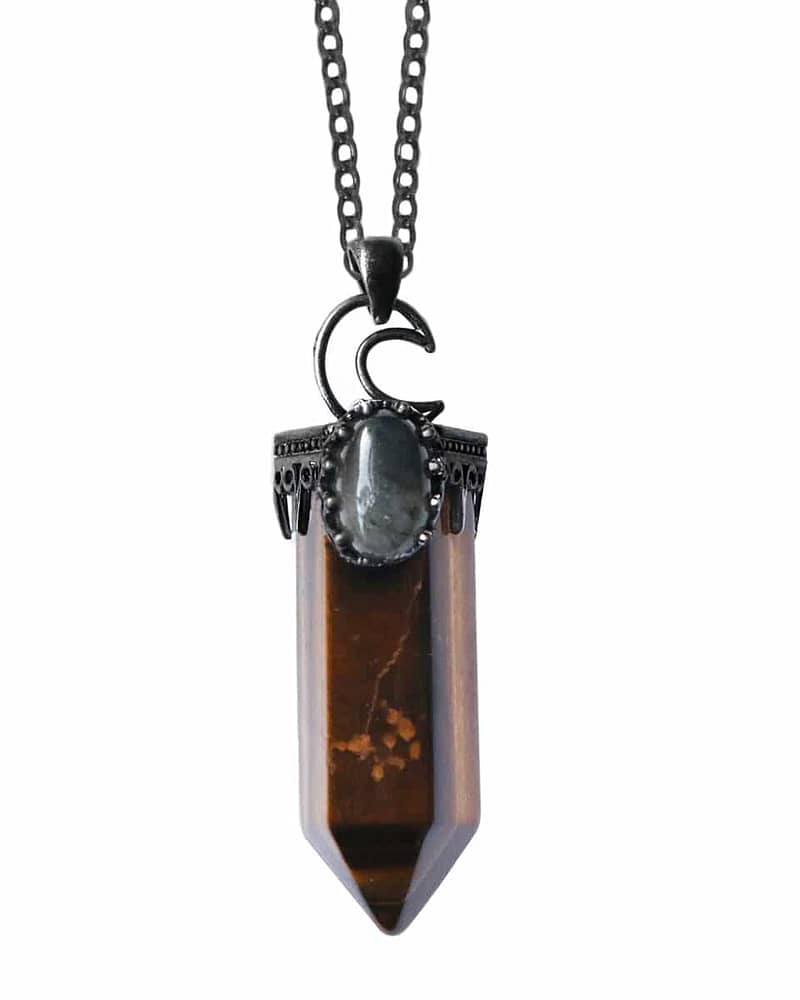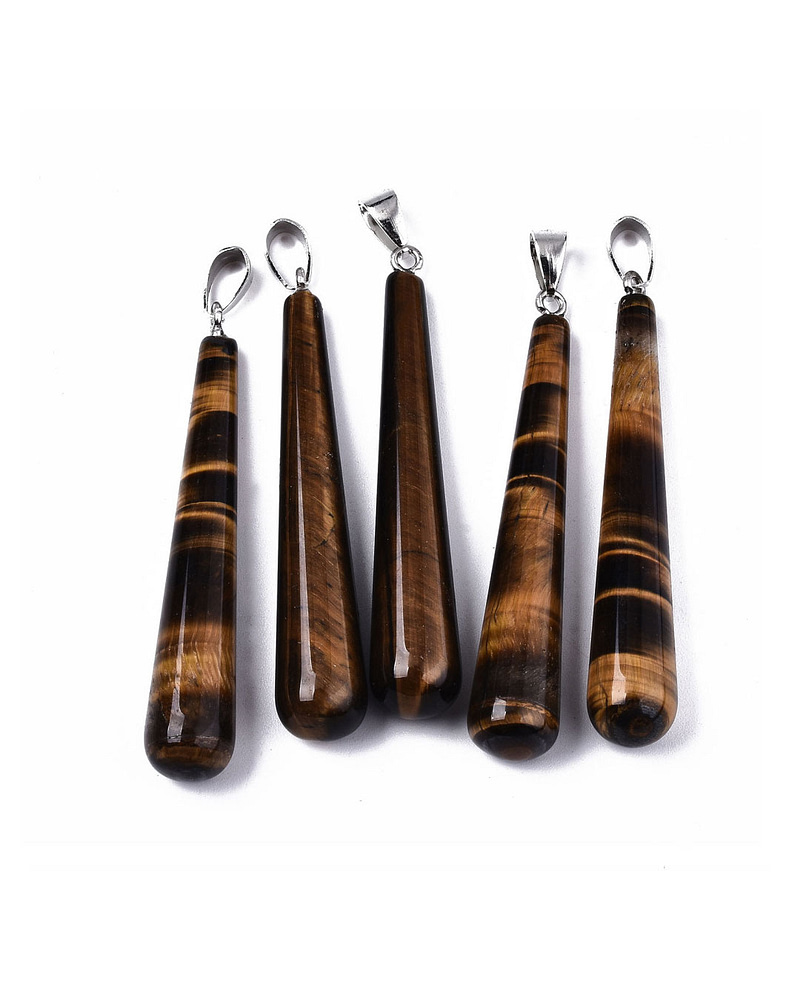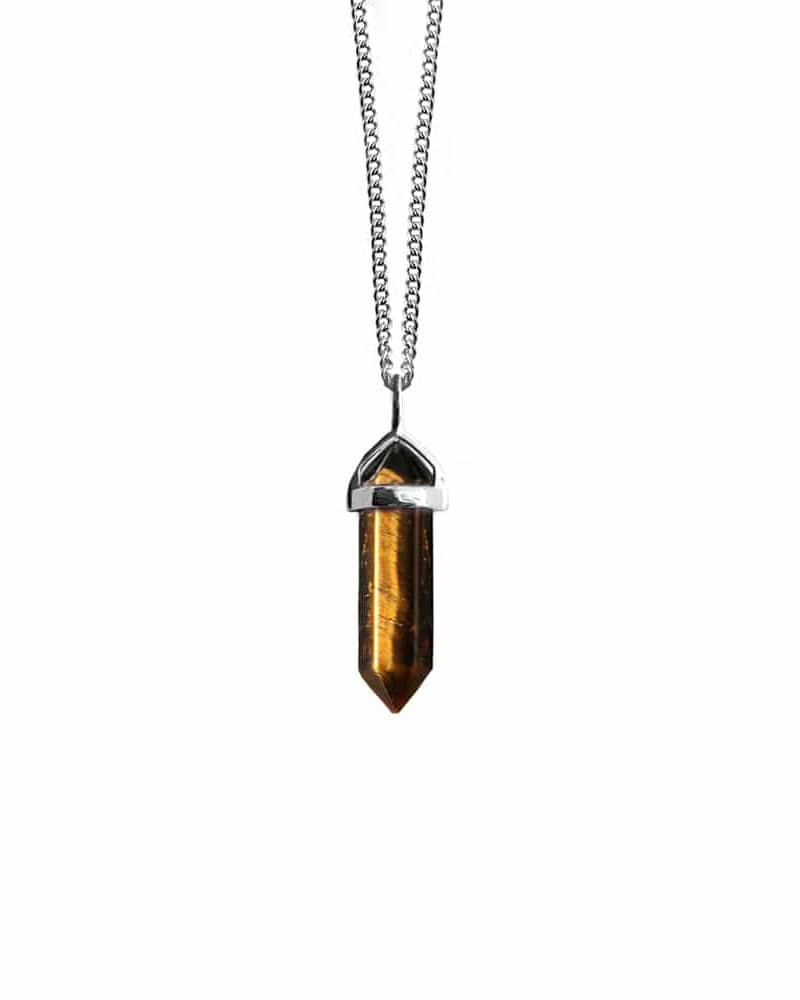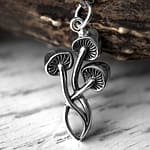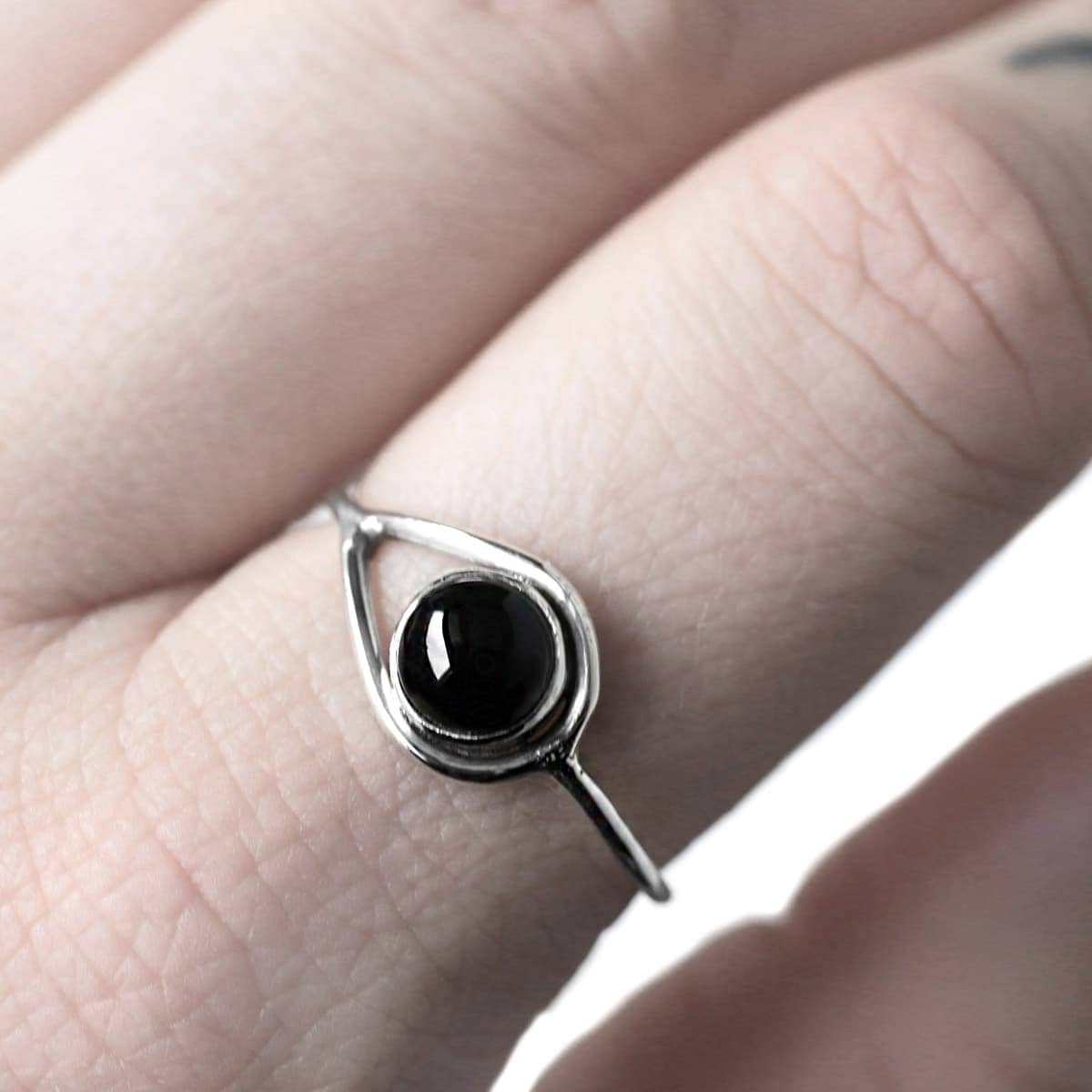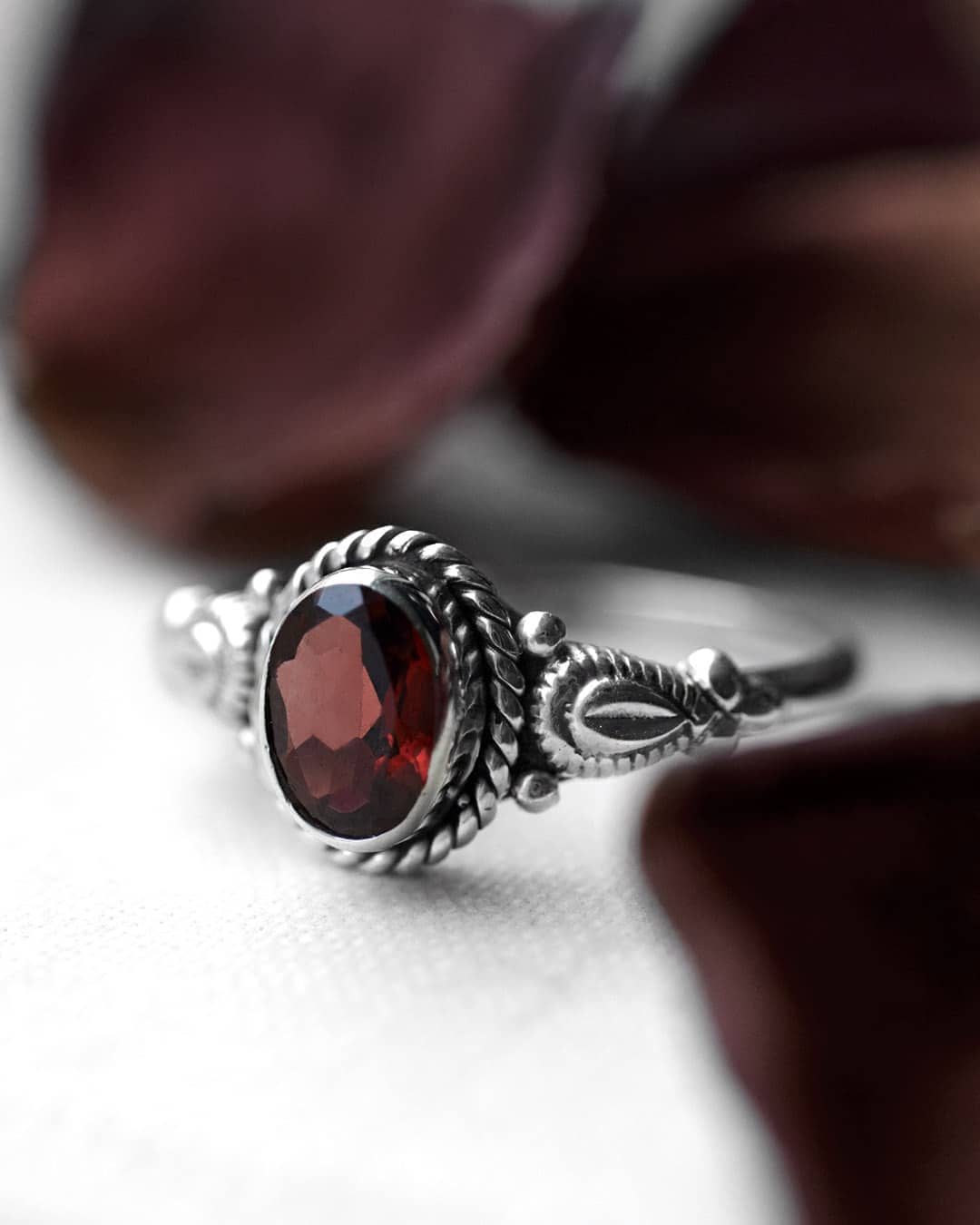Tiger's Eye Necklaces & Pendants
Adorn your neck with Tiger’s Eye Necklaces. This golden brown gemstone is often called the “Shape-shifter”, due to its irresistible colour-changing effect. If light hits it, its luminous streaks of gold and brown twist and twirl, like the eye of a tiger. Legend says Tiger Eyes Crystals boost courage and self-confidence, preparing you to take fearless leaps of faith into the future.
- Sorry, this product cannot be purchased.
Crystal Knowledge Tiger’s Eye:
Type
Tiger’s Eye* is a semi-precious, colour-changing golden brown gemstone in the quartz family with a remarkable and constantly shifting light effect called chatoyancy (cat’s-eye). A striking sandwich effect of luminous streaks within the stone made up of varying different coloured parallel layers of quartz crystals, amphibole– and limonite fibres. This cat’s-eye effect is most visible in polished stones when moved back and forth. The stone mainly gets its colour due to iron oxide.
Gemstones with this remarkable optical cat’s eye effect include Beryl, Hawk’s Eye, Labradorite, Moonstone, Selenite and Tiger’s Eye.
Colour
Tiger’s Eye’s natural colouring ranges from dark chocolate brown to golden red-brown to orange and yellow with a silky lustre.
Curiosity:
The optical effect chatoyancy originates from the French “œil de chat”, meaning cat’s eye/eye of the cat.
History
Tiger’s eye was introduced to Europe by the French explorer and ornithologist Francois Levaillant in 1784. In the same era, Tiger’s Eye pebbles were collected and described by German naturalist Martin Hinrich Lichtenstein in 1796 with the following words: “I also saw one extraordinary stone, to which I cannot yet give a name. It is as large as a nutmeg, has a varying splendour like the opal or cat’s eye, but is of a browner hue, with a gold-coloured belt. It strikes fire with steel”
How to tell if a crystal is real:
Tiger’s Eye replicas made of glass are common, look for imperfections to identify that you are buying a natural gemstone. The chatoyancy (cat’s-eye) effect is also a cue to identify a real or fake Tiger’s Eye gemstone. Natural Tiger’s Eye stone has shifting layers, with different size and colouring within the stone – synthetic stone replicas has regular reoccurring straight layers.
Good to know:
Tiger’s eye comes with many different spellings, with or without the hyphen – Tiger’s Eye, or Tigers Eye, some write it in singular Tiger Eye, others Tigers Eye. In the best-selling book Gemstones of the World by Walter Schumann, it’s written like “tiger’s-eye”.
*We use the spelling Tiger’s Eye when describing this golden brown stone.
Birthstone:
Tiger’s Eye is not a traditional birthstone.
Zodiac Crystal:
Tiger’s Eye is not a traditional zodiac stone.
Real Coven Chatter
Testimonials from our Customers, no shadow tricks or AI 🖤
Hellaholics
Gothic & Occult Jewellery since 2014
4.7/5
In average rating
Customer Service
Shopping
Your Pages
SECURE & EASY CHECKOUT

SOCIAL SHOPPING
JOIN THE COVEN 55k +
© 2024 Hellaholics.com. All Rights Reserved.
Be the winner of Presents! Give your loved one a Shopping Spree 🎁
Verified Reviews (Yes, from real people!)
Trusted by Witchy Gals Worldwide
Hellaholics
Gothic & Occult Jewellery since 2014
4.7/5
In average rating
Customer Service
Shopping
Your Pages
© 2024 Hellaholics.com. All Rights Reserved.
Be the winner of Presents! Give your loved one a Shopping Spree 🎁













